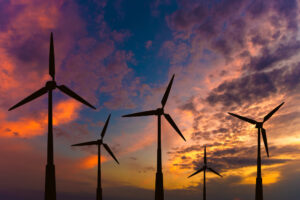In 2021-2023, the private power generation business has good growth prospects. According to the demand for electricity in the country is expected to grow at an average of 2.8-3.8% per year, as well as policies to support government investment according to the power development plan and renewable and alternative energy development plans.
basic information
Thailand’s power generation business uses an Enhanced Single Buyer (ESB) business structure. The Electricity Generating Authority of Thailand (EGAT) is both a producer and purchaser of electricity supplied to the system by large independent power producers (IPP) and small private power producers. Small Power Producer (SPP) also monopolizes the transmission system. (transmission system) with the Metropolitan Electricity Authority (Metropolitan Electricity Authority: MEA) and Provincial Electricity Authorities: PEA sells electricity and buys electricity from very small private producers.
The power generation business has the following important characteristics: (1) The electricity generated cannot be stored as inventory like other products. It needs to be sent immediately to the customer or user over the transmission line. Since the construction of a power plant takes 5-7 years (depending on the type of power plant), in order to meet future power demand, it is necessary to formulate a national power capacity development plan. The State as Regulator In terms of production and distribution, including setting electricity prices and preparing investment plans to increase the country’s generating capacity.
The direction of growth in the power generation business depends on
- Domestic electricity demand which fluctuates according to economic conditions The average growth rate of electricity demand is approximately 0.9-1.1 times the economic growth rate (Figure 2). When considering the economic sector in 2020, it was found that in 2020, the industrial, household, business and other sectors consumed electricity accounted for 43.9%, 28.3%, 23.5% and 4.3% of the total electricity consumption of the country respectively (Figure 3), with food industry consuming the most electricity followed by steel and base metal industry. electronics, automotive and plastics. The service sectors that consume the most electricity are apartments and guesthouses. Department stores, hotels, retail and wholesale, respectively.
-
pakgonhttps://pakgon.com/author/pakgon/
-
pakgonhttps://pakgon.com/author/pakgon/
-
pakgonhttps://pakgon.com/author/pakgon/
-
pakgonhttps://pakgon.com/author/pakgon/




